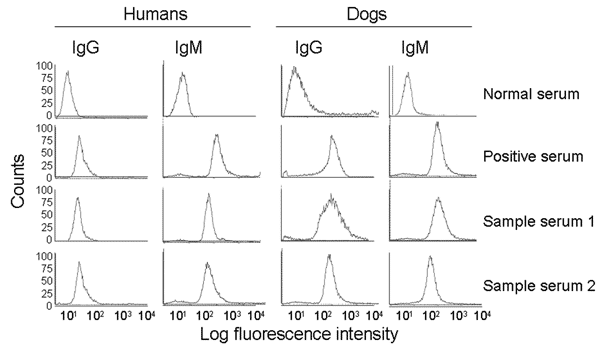Volume 12, Number 4—April 2006
Research
Human Trypanosoma cruzi Infection and Seropositivity in Dogs, Mexico
Figure 3

Figure 3. Detection of antibodies to Trypanosoma cruzi by immunofluorescence flow cytometry. Fluorescein isothiocyanate fluorescence intensities for T. cruzi–specific immunoglobulin G (IgG) and IgM antibodies in human and dog serum samples are shown. Background staining with normal serum, positive staining with chronic serum, and representative staining with 2 of the test serum samples are shown.
1These authors contributed equally to this work.
Page created: January 23, 2012
Page updated: January 23, 2012
Page reviewed: January 23, 2012
The conclusions, findings, and opinions expressed by authors contributing to this journal do not necessarily reflect the official position of the U.S. Department of Health and Human Services, the Public Health Service, the Centers for Disease Control and Prevention, or the authors' affiliated institutions. Use of trade names is for identification only and does not imply endorsement by any of the groups named above.